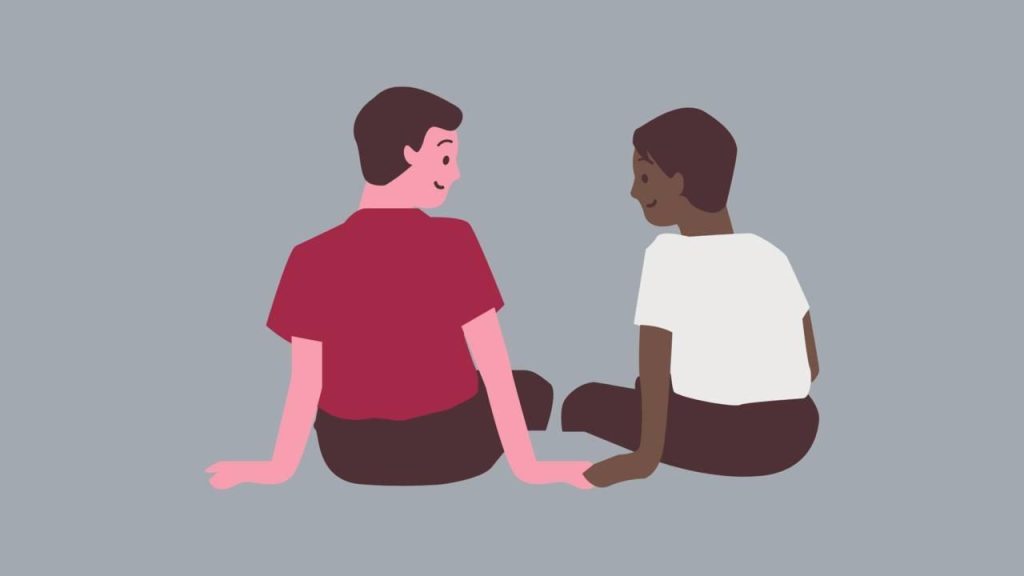In this blog post, we will discuss what secure attachment is, its outcomes, and tips for creating a secure attachment bond.
Contents
Understanding Attachment Bonds
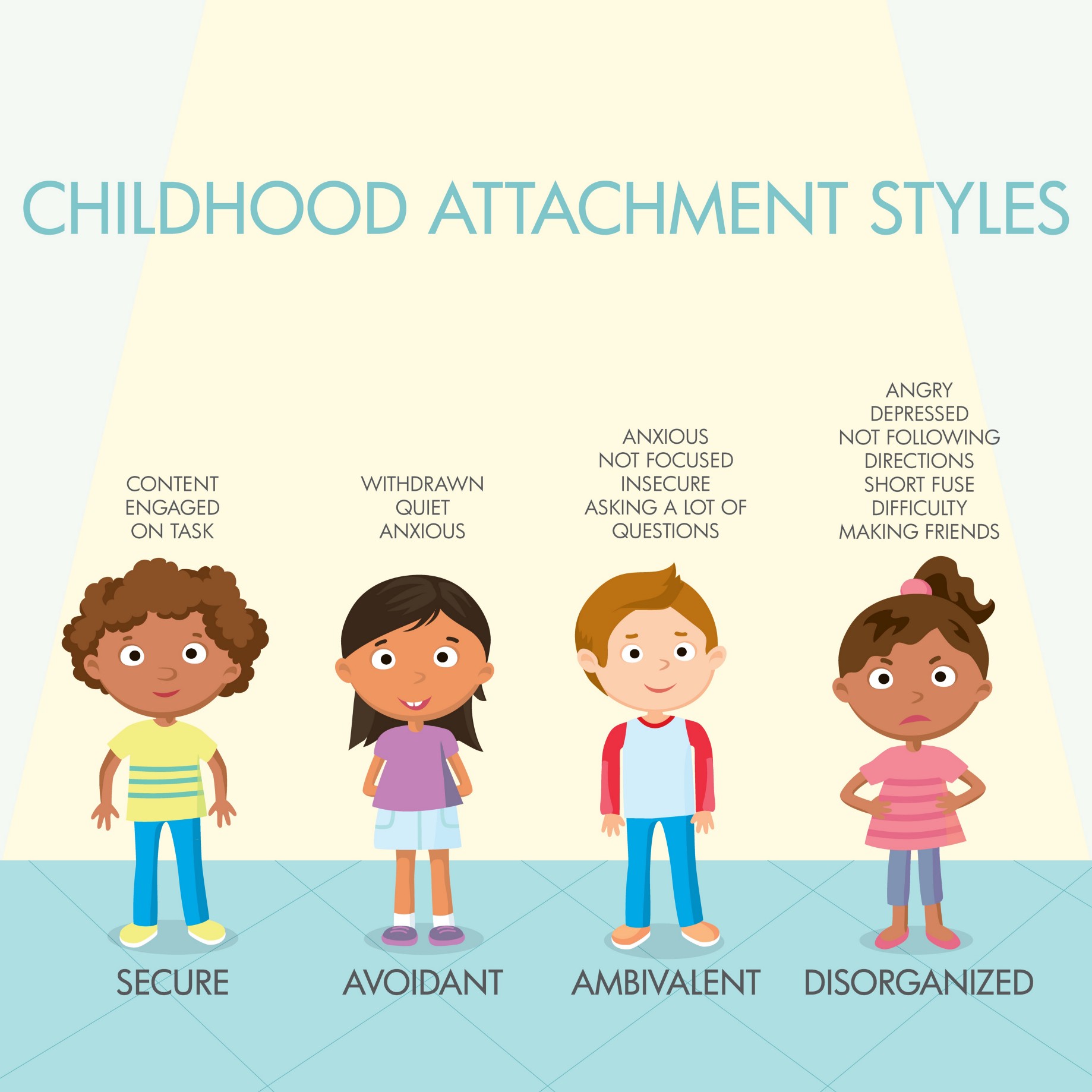
Before discussing secure attachment, it is important to first understand the different types of attachment bonds. There are three main categories of attachment bonds:
Secure Attachment
This type of bond is characterized by a caregiver who is responsive and supportive to their child’s emotional needs. The child in this relationship feels safe and secure. Thus, knowing that they can depend on their caregiver for comfort and support.
Example: John is a stay-at-home dad and he has always been very responsive to his daughter’s needs. When she falls down, he is the first one to comfort her and help her get back up. His daughter knows that she can rely on him for support and feels safe and secure when she is around him.
Avoidant Attachment
This type of bond is typified by a caregiver who is unresponsive or dismissive of their child’s emotional needs. The child in this relationship learns to suppress their emotions and does not feel safe or secure.
Example: Sarah is a single mom and she works long hours to support her daughter. She often comes home tired and stressed out, and she doesn’t have much time or energy to spend with her daughter. Sarah’s daughter learns to suppress her emotions and does not feel safe or secure when she is around her mom.
Ambivalent Attachment
This type of bond is typified by a caregiver who is inconsistently responsive to their child’s emotional needs. The child in this relationship feels insecure and anxious. Not knowing whether they can depend on their caregiver for support.
Example: Maria is a single mom and she often has a hard time deciding what to do when her daughter cries. Sometimes she will comfort her and other times she will tell her to stop being so emotional. Maria’s daughter feels insecure and anxious around her mom, not knowing whether she can depend on her for support.
Disorganized Attachment
This type of bond is typified by a caregiver who is often hostile or rejecting towards their child. The child in this relationship feels unsafe and insecure, not knowing what to expect from their caregiver.
Example: Frank is a single dad and he often lashes out at his son when he doesn’t do well in school. His son doesn’t know what to expect from him and feels unsafe and insecure around him.
Evaluating Secure Attachment
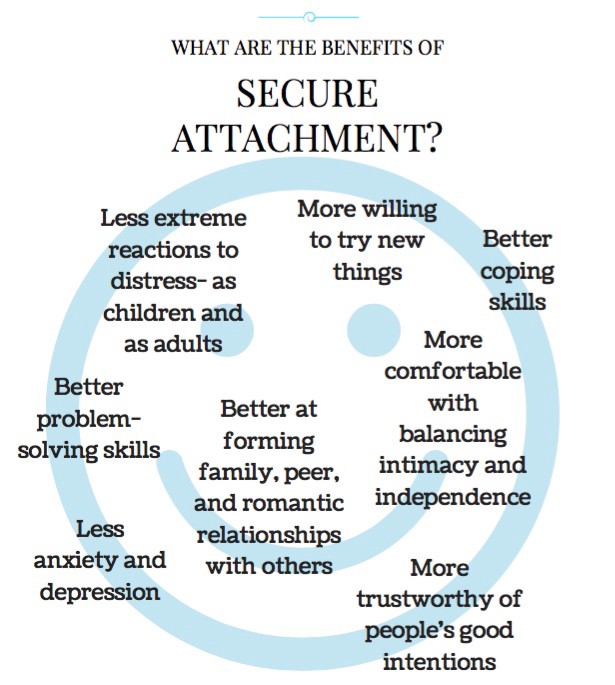
Secure attachment is important for the child’s development because:
- The child feels safe and comfortable around their caregiver, and they will be able to rely on the caregiver for emotional support.
- The child learns how to trust and depend on others, which is essential for healthy relationships.
- They also learn how to regulate their emotions, which can help them deal with stress and difficult situations.
- Children who have a secure attachment are more independent and self-sufficient than those who do not.
- Secure attachment can also lead to better academic performance and social skills.
Can It Make a Child Dependent?
Some parents may be concerned that if they form a secure attachment bond with their child, it will make the child overly dependent. However, research has shown that this is not the case. Children who have a secure attachment are more independent and self-sufficient than those who do not.
Bonding Vs. Secure Attachment
Bonding is the process of forming a connection with another person. It usually occurs during infancy. And it is important for the development of a secure attachment bond. However, bonding is not enough to create a secure attachment. The child also needs to feel safe and secure around their caregiver.
How Does Secure Attachment Work?
Secure attachment is a two-way process. The child needs to feel safe and secure in their relationship with the caregiver. And the caregiver needs to be responsive and supportive of the child’s emotional needs.
Can It Be Lost?
There is a risk that the secure attachment bond can be lost, but it is usually not permanent. If the child’s caregiver is unavailable or unsupportive, it can lead to a loss of trust and a disruption in the attachment bond.
Positive Outcomes Of Secure Attachment Bond
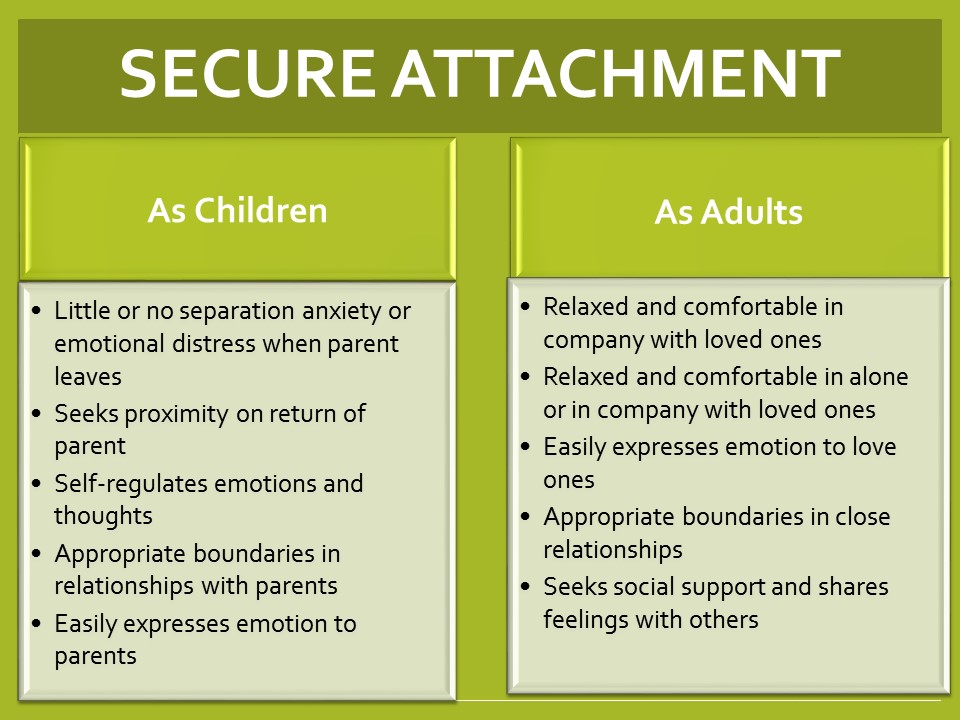
There are many positive outcomes of having this attachment bond with your child. Here are some of the most common ones. The child will:
Have a strong sense of identity: The child will know who they are and what they stand for. It leads to increased self-esteem and a better sense of self.
Be emotionally healthy: The child will be able to express their emotions freely and will not be afraid of intimacy.
Have a good relationship with their parents: The child will be able to communicate with their parents and will have a strong emotional bond with them.
Be successful in relationships: The child will be able to form healthy, stable relationships and will not be afraid of intimacy.
Creating A Secure Attachment
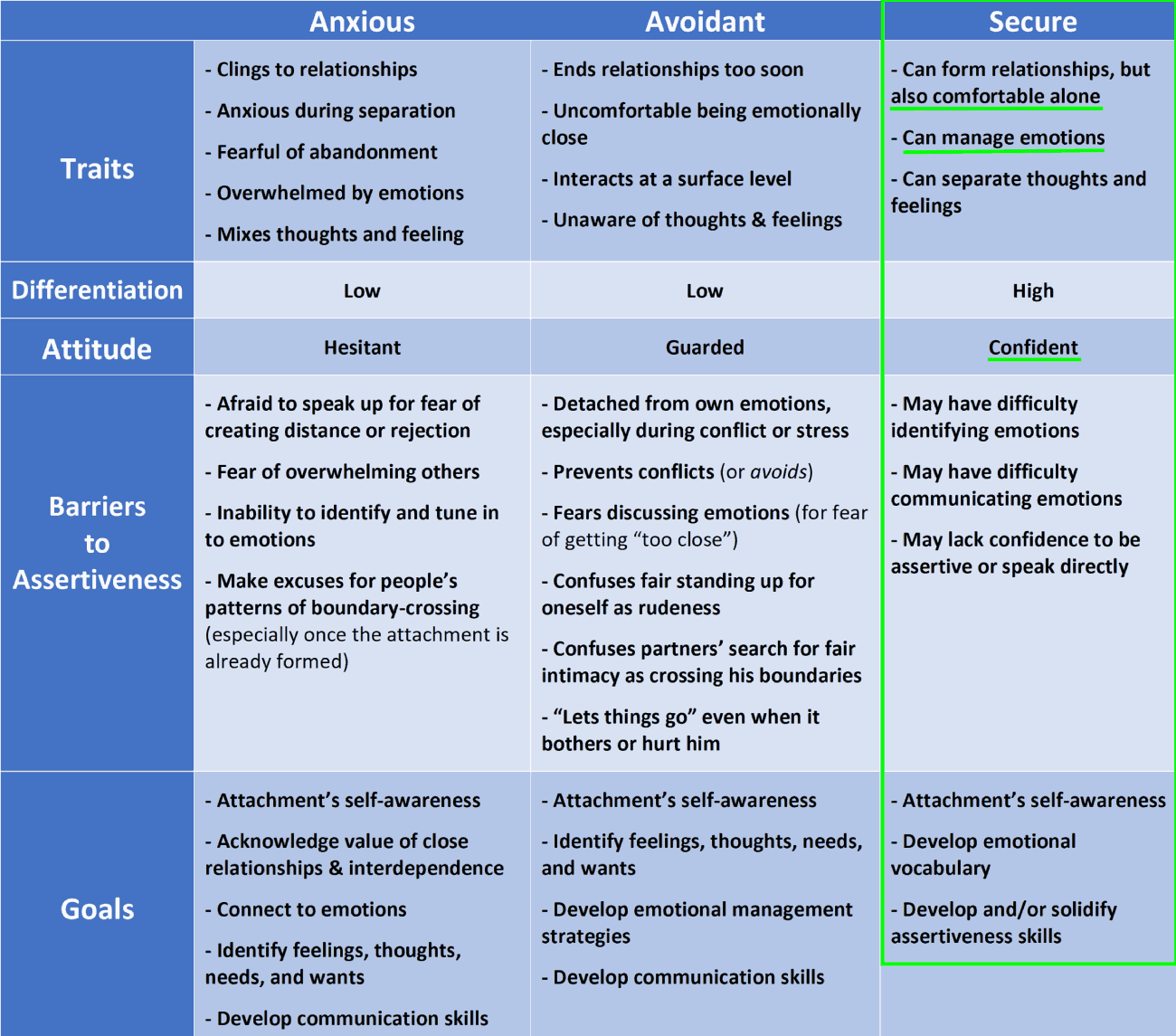
There are several things that you can do to create this attachment bond with your child. Here are some tips:
Make time for your child and be there when they need you: Spending time with your child is important, and they will know that they can count on you when they need emotional support.
Be positive and supportive: Make sure that your child knows that you love them and are proud of them. Offer encouragement and praise whenever they do something good.
Create a stable and predictable environment: The child needs to feel safe and secure in their environment. And they should be able to rely on you for guidance and support.
Encourage positive relationships with other adults: The child should have positive relationships with other adults, such as grandparents, aunts, and uncles. This will help them learn how to trust and depend on others.
Be patient: It takes time for a child to form a secure attachment bond, so don’t get discouraged if it doesn’t happen overnight.
Obstacles That You Might Face In Creating Secure Attachment
There are several obstacles that you might face in creating this attachment bond with your child. Here are some of the most common ones:
The child has experienced abuse or neglect: If the child has experienced abuse or neglect, it will be difficult for them to form a secure attachment bond.
The caregiver is unavailable or unsupportive: The caregiver might be unavailable or unsupportive, which will make it difficult for the child to form a secure attachment bond.
The child is in a foster home or has been adopted: If the child is in a foster home or has been adopted, they might have difficulty forming a secure attachment bond.
Development Milestones of Secure Attachment
Secure attachment develops over time, and there are several development milestones that you can look for. Here are some of the most common ones. At around:
- six months old, the child will become attached to their caregiver and will start to feel safe and secure around them.
- one-year-old, the child will start to explore their environment and will begin to trust others.
- two years old, the child will become more independent and will begin to establish their own identity.
- At three years old, the child will start to develop a sense of empathy and will become more emotionally attached to their caregiver.
Talking To a Professional
If you are having difficulty creating this attachment bond with your child, it might be helpful to talk to a professional. They can offer guidance and support. And they will be able to help you address any obstacles that you might be facing.
Therapies For Secure Attachment
Several therapies can help you create a secure attachment bond with your child. Here are some of the most common ones:
Parent-Child Interaction Therapy (PCIT): PCIT is a therapy that helps parents and children interact positively with each other. It teaches parents how to be more supportive and responsive to their children. And it helps children learn how to trust and depend on their parents.
Attachment-Based Therapies: Attachment-based therapies are therapies that focus on the relationship between the child and their caregiver. They help improve the attachment bond between them. And they can help address any emotional issues that the child might be facing.
Experts’ View On Secure Attachment
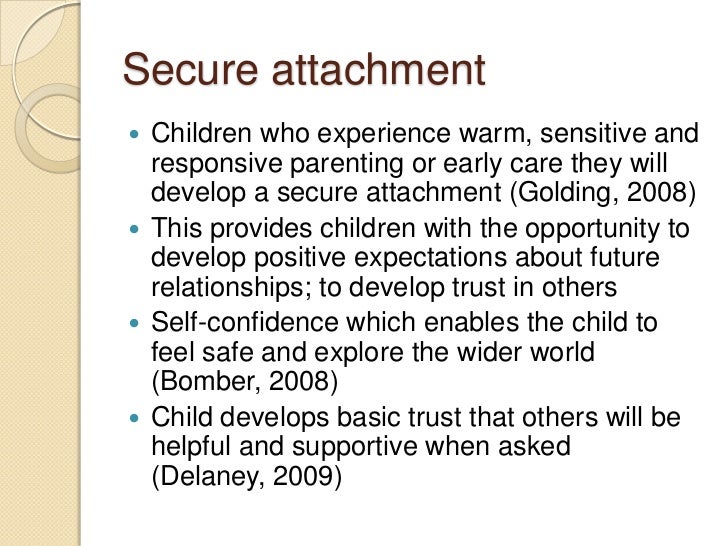 There is a lot of research that has been conducted on this attachment style. And there is a lot of consensus among experts on its benefits. Here are some of the most common things that they say about it. Secure attachment is:
There is a lot of research that has been conducted on this attachment style. And there is a lot of consensus among experts on its benefits. Here are some of the most common things that they say about it. Secure attachment is:
Crucial for the child’s emotional development: Secure attachment helps the child to develop a healthy sense of self-esteem and to trust others.
Important for social development: Secure attachment helps the child to develop social skills and to form healthy relationships.
Beneficial for cognitive development: Secure attachment helps the child to learn and to remember information effectively.
Necessary for better mental health: Studies have shown that children who have a secure attachment bond are less likely to experience mental health issues such as depression and anxiety.
Case Study
Case Example 1
Here is an example of a case study that demonstrates how secure attachment can benefit a child’s development:
Alice was adopted by her parents when she was two years old. Her biological parents were drug addicts and she had been neglected and abused by them. When Alice was adopted by her new parents, she was very withdrawn and would not let anyone touch her. Over time, however, she began to trust her parents and formed a secure attachment bond with them. She is now a healthy and happy six-year-old.
Case Example 2
Here is an example of a case study that demonstrates the positive effects of secure attachment:
Janine was a four-year-old girl who was brought to the clinic by her mother. She had been diagnosed with ADHD and oppositional defiant disorder, and she was having difficulty in school. Her mother said that she was always getting into fights with other children and that she was constantly acting out.
Janine’s therapist decided to try attachment-based therapy with her. The goal of the therapy was to improve the attachment bond between Janine and her mother.
After a few months of therapy, it was clear that the treatment was working. Janine’s behavior had improved dramatically and she was no longer getting into fights with other children. She was also doing better in school.
Conclusion
Secure attachment is an important part of a child’s development. And it can have many positive outcomes. If you are struggling to form this bond with your child, there are steps that you can take to help them to feel safe and secure. Seek out support from professionals if you need help.
A Word From Therapy Mantra
Your mental health — Your psychological, emotional, and social well-being — has an impact on every aspect of your life. Positive mental health essentially allows you to effectively deal with life’s everyday challenges.
At TherapyMantra, we have a team of therapists who provide affordable online therapy to assist you with issues such as depression, anxiety, stress, workplace Issues, addiction, relationship, OCD, LGBTQ, and PTSD. You can book a free therapy or download our free Android or iOS app.
